Strengthening Mechanisms in Carbon Nanotubes Reinforced Metal Matrix Composites: A Review
Abstract
:1. Introduction
2. Strengthening Mechanisms
2.1. Load Transfer Mechanism
2.2. Grain Refinement or Texture Hardening
2.3. Second Phase Hardening
2.4. Strain Hardening
3. Contributions of the Different Strengthening Mechanisms
4. Conclusions
Author Contributions
Funding
Institutional Review Board Statement
Informed Consent Statement
Data Availability Statement
Conflicts of Interest
References
- Xu, C.L.; Wei, B.Q.; Ma, R.Z.; Liang, J.; Ma, X.K.; Wu, D.H. Fabrication of Aluminum–Carbon Nanotube Composites and Their Electrical Properties. Carbon 1999, 37, 855–858. [Google Scholar] [CrossRef]
- Zhong, R.; Cong, H.; Hou, P. Fabrication of Nano-Al Based Composites Reinforced by Single-Walled Carbon Nanotubes. Carbon 2003, 41, 848–851. [Google Scholar] [CrossRef]
- Laha, T.; Agarwal, A.; McKechnie, T.; Seal, S. Synthesis and Characterization of Plasma Spray Formed Carbon Nanotube reinforced Aluminum Composite. Mater. Sci. Eng. A 2004, 381, 249–258. [Google Scholar] [CrossRef]
- Noguchi, T.; Magario, A.; Fukuzawa, S.; Shimizu, S.; Beppu, J.; Seki, M. Carbon Nanotube/Aluminum Composites with Uniform Dispersion. Mater. Trans. 2004, 45, 602–604. [Google Scholar] [CrossRef] [Green Version]
- Laha, T.; Agarwal, A.; McKechnie, T. Comparative Evaluation of Plasma and High Velocity Oxy-Fuel Spray Formed Carbon Nanotube Reinforced Al-Based Composite. In Surface Engineering in Materials Science-III.; Agarwal, A., Dahotre, N.B., Seal, S., Moore, J.J., Blue, C., Eds.; The Minerals, Metals and Materials Society: Warrendale, PA, USA, 2005. [Google Scholar]
- He, C.; Zhao, N.; Shi, C.; Du, X.; Li, J.; Li, H.; Cui, Q. An Approach to Obtaining Homogeneously Dispersed Carbon Nanotubes in Al Powders for Preparing Reinforced Al-Matrix Composites. Adv. Mater. 2007, 19, 1128–1132. [Google Scholar] [CrossRef]
- Deng, C.F.; Zhang, X.X.; Ma, Y.X.; Wang, D.Z. Fabrication of Aluminum Matrix Composite Reinforced with Carbon Nanotubes. Rare Met. 2007, 26, 450–455. [Google Scholar] [CrossRef]
- Zhou, S.-M.; Zhang, X.-B.; Ding, Z.-P.; Min, C.-Y.; Xu, G.-L.; Zhu, W.-M. Fabrication and Tribological Properties of Carbon Nanotubes Reinforced Al Composites Prepared by Pressureless Infiltration Technique. Compos. Part A Appl. Sci. Manuf. 2007, 38, 301–306. [Google Scholar] [CrossRef]
- Deng, C.F.; Zhang, X.X.; Wang, D.Z.; Lin, Q.; Li, A.B. Preparation and Characterization of Carbon Nanotubes/Aluminum Matrix Composites. Mater. Lett. 2007, 61, 1725–1728. [Google Scholar] [CrossRef]
- Deng, C.F.; Wang, D.Z.; Zhang, X.X.; Li, A.B. Processing and Properties of Carbon Nanotubes Reinforced Aluminum Composites. Mater. Sci. Eng. A 2007, 444, 138–145. [Google Scholar] [CrossRef]
- Esawi, A.M.K.; Borady, M.A.E. Carbon Nanotube-Reinforced Aluminum Strips. Compos. Sci. Technol. 2008, 68, 486–492. [Google Scholar] [CrossRef]
- Choi, H.J.; Kwon, G.B.; Lee, G.Y.; Bae, D.H. Reinforcement with Carbon Nanotubes in Aluminum Matrix Composites. Scr. Mater. 2008, 59, 360–363. [Google Scholar] [CrossRef]
- Tokunaga, T.; Kaneko, K.; Horita, Z. Production of Aluminum-Matrix Carbon Nanotube Composite Using High Pressure Torsion. Mater. Sci. Eng. A 2008, 490, 300–304. [Google Scholar] [CrossRef]
- Lim, D.K.; Shibayanagi, T.; Gerlich, A.P. Synthesis of Multi-Walled CNT Reinforced Aluminum Alloy Composite via Friction Stir Processing. Mater. Sci. Eng. A 2009, 507, 194–199. [Google Scholar] [CrossRef]
- Dong, S.R.; Tu, J.P.; Zhang, X.B. An Investigation of the Sliding Wear Behavior of Cu-Matrix Composite Reinforced by Carbon Nanotubes. Mater. Sci. Eng. A 2001, 313, 83–87. [Google Scholar] [CrossRef]
- Tu, J.P.; Yang, Y.Z.; Wang, L.Y.; Ma, X.C.; Zhang, X.B. Tribological Properties of Carbon-Nanotube-Reinforced Copper Composites. Tribol. Lett. 2001, 10, 225–228. [Google Scholar] [CrossRef]
- Kim, K.T.; Lee, K.H.; Cha, S.I.; Mo, C.B.; Hong, S.H. Characterization of Carbon Nanotubes/Cu Nanocomposites Processed by Using Nano-Sized Cu Powders. Mater. Res. Soc. Symp. Proc. 2004, 821. [Google Scholar] [CrossRef]
- Chen, X.H.; Li, W.H.; Chen, C.S.; Xu, L.S.; Yang, Z.; Hu, J. Preparation, and Properties of Cu Matrix Composite Reinforced by Carbon Nanotubes. Trans. Nonferrous Met. Soc. China. 2005, 15, 314–318. [Google Scholar]
- Kim, K.T.; Cha, S.I.; Hong, S.H.; Hong, S.H. Microstructures and Tensile Behavior of Carbon Nanotube Reinforced Matrix Nanocomposites. Mater. Sci. Eng. A 2006, 430, 27–33. [Google Scholar] [CrossRef]
- Li, Y.-H.; Housten, W.; Zhao, Y.; Zhu, Y.Q. Cu/Single-Walled Carbon Nanotube Laminate Composites Fabricated by Cold Rolling and Annealing. Nanotechnology 2007, 18, 205607. [Google Scholar] [CrossRef]
- Kim, K.T.; Cha, S.I.; Hong, S.H. Hardness and Wear Resistance of Carbon Nanotube Reinforced Cu Matrix Nanocomposites. Mater. Sci. Eng. A 2007, 449–451, 46–50. [Google Scholar] [CrossRef]
- Yang, Y.L.; Wang, Y.D.; Ren, Y.; He, C.S.; Deng, J.N.; Nan, J.; Chen, J.G.; Zuo, L. Single-Walled Carbon Nanotube-Reinforced Copper Composite Coatings Prepared by Electrodeposition under Ultrasonic Field. Mater. Lett. 2008, 62, 47–50. [Google Scholar] [CrossRef]
- Kim, H.N.; Chang, S.N.; Kim, D.K. Enhanced Microhardness of Nanocrystalline Carbon Nanotube Reinforced Cu Composite Using Planar Shock-Wave Compaction. Scr. Mater. 2009, 61, 871–874. [Google Scholar] [CrossRef]
- Li, H.; Misra, A.; Horita, Z.; Koch, C.C.; Mara, N.A.; Dickerson, P.O.; Zhu, Y. Strong and Ductile Nanostructured Cu-Carbon Nanotube Composite. Appl. Phys. Lett. 2009, 95, 071907. [Google Scholar] [CrossRef] [Green Version]
- Chen, X.; Zhang, G.; Chen, C.; Zhou, L.; Li, S.; Li, X. Carbon Nanotube Composite Deposits with High Hardness and High Wear Resistance. Adv. Eng. Mater. 2003, 5, 514–518. [Google Scholar] [CrossRef]
- Chen, W.X.; Tu, J.P.; Xu, Z.D.; Chen, W.L.; Zhang, X.B.; Cheng, D.H. Tribological Properties of Ni–P-Multi-Walled Carbon Nanotubes Electroless Composite Coating. Mater. Lett. 2003, 57, 1256–1260. [Google Scholar] [CrossRef]
- Wang, L.Y.; Tu, J.P.; Chen, W.X.; Wang, Y.C.; Liu, X.K.; Olk, C.; Cheng, D.H.; Zhang, X.B. Friction and Wear Behavior of Electroless Ni-Based CNT Composite Coatings. Wear 2003, 254, 1289–1293. [Google Scholar] [CrossRef]
- Yang, Z.; Xu, H.; Li, M.K.; Shi, Y.L.; Huang, Y.; Li, H.L. Preparation and Properties of Ni/P/Single-Walled Carbon Nanotubes Composite Coatings by Means of Electroless Plating. Thin Solid Film 2004, 466, 86–91. [Google Scholar] [CrossRef]
- Tu, J.P.; Zhu, L.-P.; Chen, W.-X.; Zhao, X.-B.; Liu, F.; Zhang, X.-B. Preparation of Ni-CNT Composite Coatings on Aluminum Substrate and its Friction and Wear Behavior. Trans. Nonferrous Met. Soc. China 2004, 14, 880–884. [Google Scholar]
- Deng, F.M.; Chen, X.H.; Chen, W.X.; Li, W.Z. Electroless Plating Ni-P Matrix Composite Coating Reinforced by Carbon Nanotubes. Trans. Nonferrous Met. Soc. China 2004, 14, 681–685. [Google Scholar]
- Shen, G.R.; Cheng, Y.T.; Tsai, L.T. Synthesis and Characterization of Ni–P-CNT’s Nanocomposite Film for MEMS Applications. IEEE Trans. Nanotech. 2005, 4, 539–547. [Google Scholar] [CrossRef]
- Yang, Z.; Xu, H.; Shi, Y.L.; Li, M.K.; Huang, Y.; Li, H.L. The Fabrication and Corrosion Behavior of Electroless Ni–P-Carbon Nanotube Composite Coatings. Mater. Res. Bull. 2005, 40, 1001–1009. [Google Scholar] [CrossRef]
- Chen, C.S.; Chen, X.H.; Yang, Z.; Li, W.H.; Xu, L.S.; Yi, B. Effect of Multi-Walled Carbon Nanotubes as Reinforced Fibres on Tribological Behavior of Ni–P Electroless Coatings. Diam. Relat. Mater. 2006, 15, 151–156. [Google Scholar] [CrossRef]
- Sun, Y.; Sun, J.; Liu, M.; Chen, Q. Mechanical Strength of Carbon Nanotube–Nickel Nanocomposites. Nanotechnology 2007, 18, 505704. [Google Scholar] [CrossRef]
- Dai, P.Q.; Xu, W.C.; Huang, Q.Y. Mechanical Properties, and Micro-Structure of Nanocrystalline Nickel-Carbon Nanotube Composites Produced by Electrodeposition. Mater. Sci. Eng. A 2008, 483–484, 172–174. [Google Scholar] [CrossRef]
- Goh, C.S.; Wei, J.; Lee, L.C.; Gupta, M. Simultaneous Enhancement in Strength and Ductility by Reinforcing Magnesium with Carbon Nanotubes. Mater. Sci. Eng. A 2006, 423, 153–156. [Google Scholar] [CrossRef]
- Goh, C.S.; Wei, J.; Lee, L.C.; Gupta, M. Development of Novel Carbon Nanotube Reinforced Magnesium Nanocomposites Using the Powder Metallurgy Technique. Nanotechnology 2006, 17, 7–12. [Google Scholar] [CrossRef]
- Kondoh, K.; Threrujirapapong, T.; Imai, H.; Umeda, J.; Fugetsu, B. Characteristics of Powder Metallurgy Pure Titanium Matrix Composite Reinforced with Multi-Wall Carbon Nanotubes. Compos. Sci. Technol. 2009, 69, 1077–1081. [Google Scholar] [CrossRef] [Green Version]
- Xue, F.; Jiehe, S.; Yan, F.; Wei, C. Preparation and Elevated Temperature Compressive Properties of Multi-Walled Carbon Nanotube Reinforced Ti Composites. Mater. Sci. Eng. A 2010, 527, 1586–1589. [Google Scholar] [CrossRef]
- Li, S.; Sun, B.; Imai, H.; Mimoto, T.; Kondoh, K. Powder Metallurgy Titanium Metal Matrix Composites Reinforced with Carbon Nanotubes and Graphite. Compos. Part A Appl. Sci. Manuf. 2013, 48, 57–66. [Google Scholar] [CrossRef]
- Munir, K.S.; Zheng, Y.; Zhang, D.; Lin, J.; Li, Y.; Wen, C. Improving the Strengthening Efficiency of Carbon Nanotubes in Titanium Metal Matrix Composites. Mater. Sci. Eng. A 2017, 696, 10–25. [Google Scholar] [CrossRef]
- Cha, S.I.; Kim, K.T.; Arshad, S.N.; Mo, C.B.; Hong, S.H. Extraordinary Strengthening Effect of Carbon Nanotubes in Metal-Matrix Nanocomposites Processed by Molecular-Level Mixing. Adv. Mater. 2008, 17, 1377–1381. [Google Scholar] [CrossRef] [PubMed]
- Kim, K.T.; Cha, S.I.; Gemming, T.; Eckert, J.; Hong, S.H. The Role of Interfacial Oxygen Atoms in the Enhanced Mechanical Properties of Carbon-Nanotube-Reinforced Metal Matrix Nanocomposites. Small 2008, 4, 1936–1940. [Google Scholar] [CrossRef]
- Li, H.; Misra, A.; Zhu, Y.; Horita, Z.; Koch, C.C.; Holesingerd, T.G. Processing and Characterization of Nanostructured Cu-carbon Nanotube Composites. Mater. Sci. Eng. A 2009, 523, 60–64. [Google Scholar] [CrossRef]
- Harris, P.J.F. Carbon Nanotube Composites. Int. Mater. Rev. 2004, 49, 31–43. [Google Scholar] [CrossRef]
- Kwon, H.; Estili, M.; Takagi, K.; Miyazaki, T.; Kawasaki, A. Combination of Hot Extrusion and Spark Plasma Sintering for Producing Carbon Nanotube Reinforced Aluminum Matrix Composites. Carbon 2009, 47, 570–577. [Google Scholar] [CrossRef]
- Choi, H.; Shin, J.; Min, B.; Park, J.; Bae, D. Reinforcing Effects of Carbon Nanotubes in Structural Aluminum Matrix Nanocomposites. J. Mater. Res. 2009, 24, 2610–2616. [Google Scholar] [CrossRef]
- Pérez-Bustamante, R.; Gómez-Esparza, C.D.; Estrada-Guel, I.; Miki-Yoshida, M.; Licea-Jiménez, L.; Pérez-García, S.A.; Martínez-Sánchez, R. Microstructural and Mechanical Characterization of Al–MWCNT Composites Produced by Mechanical Milling. Mater. Sci. Eng. A 2009, 502, 159–163. [Google Scholar] [CrossRef]
- He, C.N.; Zhao, N.Q.; Shi, C.S.; Song, S.Z. Mechanical Properties and Microstructures of Carbon Nanotube-Reinforced Al Matrix Composite Fabricated by In Situ Chemical Vapor Deposition. J. Alloy. Compd. 2009, 487, 258–262. [Google Scholar] [CrossRef]
- Sridhar, I.; Narayanan, K.R. Processing and Characterization of MWCNT Reinforced Aluminum Matrix Composites. J. Mater. Sci. 2009, 44, 1750–1756. [Google Scholar] [CrossRef]
- Esawi, A.M.K.; Morsi, K.; Sayed, A.; Gawad, A.A.; Borah, P. Fabrication and Properties of Dispersed Carbon Nanotube–Aluminum Composites. Mater. Sci. Eng. A 2009, 508, 167–173. [Google Scholar] [CrossRef]
- Paramsothy, M.; Hassan, S.F.; Srikanth, N.; Gupta, M. Adding Carbon Nanotubes and Integrating with AA5052 Aluminum Alloy Core to Simultaneously Enhance Stiffness, Strength and Failure Strain of AZ31 magnesium Alloy. Compos. A Appl. Sci. Manuf. 2009, 40, 1490–1500. [Google Scholar] [CrossRef]
- Li, Q.; Viereckl, A.; Rottmair, C.A.; Singer, R.F. Improved Processing of Carbon Nanotube/Magnesium Alloy Composites. Compos. Sci. Technol. 2009, 69, 1193–1199. [Google Scholar] [CrossRef]
- Daoush, W.M.; Lim, B.K.; Mo, C.B.; Nam, D.H.; Hong, S.H. Electrical and Mechanical Properties of Carbon Nanotube Reinforced Copper Nanocomposites Fabricated by Electroless Deposition Process. Mater. Sci. Eng. A 2009, 513, 247–253. [Google Scholar] [CrossRef]
- Sun, Y.; Chen, Q. Diameter Dependent Strength of Carbon Nanotube Reinforced Composite. Appl. Phys. Lett. 2009, 95, 021901. [Google Scholar] [CrossRef] [Green Version]
- Choi, H.J.; Shin, J.H.; Min, B.H.; Bae, D.H. Deformation Behavior of Al–Si Alloy Based Nanocomposites Reinforced with Carbon Nanotubes. Compos. A Appl. Sci. Manuf. 2010, 41, 327–329. [Google Scholar] [CrossRef]
- Yang, K.; Yang, X.; Liu, E.; Shi, C.; Ma, L.; He, C.; Li, Q.; Li, J.; Zhao, N. High Strain Rate Dynamic Compressive Properties and Deformation Behavior of Al Matrix Composite Foams Reinforced by In-Situ Grown Carbon Nanotubes. Mater. Sci. Eng. A 2018, 729, 487–495. [Google Scholar] [CrossRef]
- Kearney, A.L. Properties of Cast Aluminum Alloys. In Properties and Selection: Nonferrous Alloys and Special—Purpose Materials; ASM International: Almere, The Netherlands, 1990; Volume 2, pp. 152–177. ISBN 9780871703781. [Google Scholar]
- Tjong, S.C. Recent Progress in the Development and Properties of Novel Metal Matrix Nanocomposites Reinforced with Carbon Nanotubes and Graphene Nanosheets. Mater. Sci. Eng. 2013, 74, 281–350. [Google Scholar] [CrossRef]
- Azarniya, A.; Safavi, M.S.; Sovizi, S.; Azaeniya, A.; Chen, B.; Hosseini, A.R.M.; Ramakrishna, S. Metallurgical Challenges in Carbon Nanotube-Reinforced Metal Matrix Nanocomposites. Metals 2017, 7, 384. [Google Scholar] [CrossRef] [Green Version]
- Bakshi, S.R.; Keshri, A.K.; Singh, V.; Seal, S.; Agarwal, A. Interface in Carbon Nanotube Reinforced Aluminum Silicon Composites: Thermodynamic Analysis and Experimental Verification. J. Alloys Compd. 2009, 481, 207–213. [Google Scholar] [CrossRef]
- Clyne, T.W.; Withers, P.J. An Introduction to Metal Matrix Composites; Cambridge University Press: Cambridge, UK, 1995; pp. 1–43. ISBN 9780521483575. [Google Scholar]
- Fridlyander, J. Metal Matrix Composites; Springer: Amsterdam, The Netherlands, 1995; Volume 3, ISBN 9789401112666. [Google Scholar]
- Nieto, A.; Agarwal, A.; Lahiri, D.; Bisht, A.; Bakshi, R.S. Carbon Nanotubes Reinforced Metal Matrix Composites; CRC Press, Taylor and Francis Group: Boca Raton, FL, USA, 2021; ISBN 9780367274924. [Google Scholar]
- Esawi, A.; Morsi, K.; Sayed, A.; Taher, M.; Lanka, S. Effect of Carbon Nanotube (CNT) Content on the Mechanical Properties of CNT-Reinforced Aluminium Composites. Compos. Sci. Technol. 2010, 70, 2237–2241. [Google Scholar] [CrossRef]
- Bakshi, S.R.; Agarwal, A. An Analysis of the Factors Affecting Strengthening in Carbon Nanotube Reinforced Aluminum Composites. Carbon 2011, 49, 533–544. [Google Scholar] [CrossRef]
- George, R.; Kashyap, K.T.; Rahul, R.; Yamdagni, S. Strengthening in Carbon Nanotube/Aluminium (CNT/Al) Composites. Scr. Mater. 2005, 53, 1159–1163. [Google Scholar] [CrossRef]
- Park, J.G.; Keum, D.H.; Lee, Y.H. Strengthening Mechanism in Carbon Nanotube-Reinforced Aluminum Composites. Carbon 2015, 95, 690–698. [Google Scholar] [CrossRef]
- Chen, B.; Li, S.; Imai, H.; Jia, L.; Umeda, J.; Takahashi, M.; Kondoh, K. Load Transfer Strengthening in Carbon Nanotubes Reinforced Metal Matrix Composites via In Situ Tensile Tests. Compos. Sci. Technol. 2015, 113, 1–8. [Google Scholar] [CrossRef]
- Kwon, H.; Kawasaki, A. Effect of Spark Plasma Sintering in Fabricating Carbon Nanotube Reinforced Aluminum Matrix Composite Materials. In Composite Materials for Medicine and Nanotechnology; Brahim, A., Ed.; InTech: Vienna, Austria, 2011; ISBN 9789533072357. [Google Scholar]
- Yoo, S.J.; Han, S.H.; Kim, W.J. Strength and Strain Hardening of Aluminum Matrix Composites with Randomly Dispersed Nanometer-Length Fragmented Carbon Nanotubes. Scr. Mater. 2013, 68, 711–714. [Google Scholar] [CrossRef]
- Xie, K.; Zhang, G.; Huang, H.; Zhang, J.; Liu, Z.; Cai, B. Investigation of the Main Strengthening Mechanisms of Carbon Nanotube Reinforced Aluminum Composites. Mater. Sci. Eng. A 2021, 804, 140780. [Google Scholar] [CrossRef]
- Wang, M.; Li, Y.; Chen, B.; Shi, D.; Umeda, J.; Kondoh, K.; Shen, J. The Rate-Dependent Mechanical Behavior of CNT-Reinforced Aluminum Matrix Composites under Tensile Loading. Mater. Sci. Eng. A 2021, 808, 140893. [Google Scholar] [CrossRef]
- Chen, B.; Shen, J.; Ye, X.; Imai, H.; Umeda, J.; Takahashi, M.; Kondoh, K. Solid-State Interfacial Reaction and Load Transfer Efficiency in Carbon Nanotubes (CNTs)-Reinforced Aluminum Matrix Composites. Carbon 2017, 114, 198–208. [Google Scholar] [CrossRef]
- Hwang, J.; Lim, B.; Tiley, J.; Banerjee, R.; Hong, S. Interface Analysis of Ultra-High Strength Carbon Nanotube/Nickel Composites Processed by Molecular Level Mixing. Carbon 2013, 57, 282–287. [Google Scholar] [CrossRef]
- Nguyen, J.; Holland, T.; Wen, H.; Fraga, M.; Mukherjee, A.; Lavernia, E. Mechanical Behavior of Ultrafine-Grained Ni-Carbon Nanotube Composite. J. Mater. Sci. 2014, 49, 2070–2077. [Google Scholar] [CrossRef]
- Nai, M.H.; Wei, J.; Gupta, M. Interface Tailoring to Enhance Mechanical Properties of Carbon Nanotube Reinforced Magnesium Composites. Mater. Des. 2014, 60, 490–495. [Google Scholar] [CrossRef]
- Kelly, A.; Tyson, A.W. Tensile Properties of Fiber-Reinforced Metals: Copper/Tungsten and Copper/Molybedenumn. J. Mech. Phys. Solids 1965, 13, 329–350. [Google Scholar] [CrossRef]
- Zhou, W.; Yamamoto, G.; Fan, Y.; Kwon, H.; Hashida, T.; Kawasaki, A. In-Situ Characterization of Interfacial Shear Strength in Multi-Walled Carbon Nanotube Reinforced Aluminum Matrix Composites. Carbon 2016, 106, 37–47. [Google Scholar] [CrossRef]
- Chen, B.; Li, S.; Imai, H.; Umeda, J.; Takahashi, M.; Kondoh, K. Inter-Wall Bridging Induced Peeling of Multi-Walled Carbon Nanotubes during Tensile Failure in Aluminum Matrix Composites. Micron 2015, 69, 1–5. [Google Scholar] [CrossRef]
- Boesl, B.; Lahiri, D.; Behdad, S.; Agarwal, A. Direct Observation of Carbon Nanotube Induced Strengthening in Aluminum Composite via In Situ Tensile Tests. Carbon 2014, 69, 79–85. [Google Scholar] [CrossRef]
- Choi, H.J.; Shin, J.H.; Bae, D.H. Grain Size Effect on the Strengthening Behavior of Aluminum-Based Composites Containing Multi-Walled Carbon Nanotubes. Compos. Sci. Technol. 2011, 71, 1699–1705. [Google Scholar] [CrossRef]
- Fan, G.; Huang, H.; Tan, Z.; Xiong, D.; Guo, Q.; Naito, M.; Li, Z.; Zhang, D. Grain Refinement and Superplastic Behavior of Carbon Nanotube Reinforced Aluminum Alloy Composite Processed by Cold Rolling. Mater. Sci. Eng. A 2017, 708, 537–543. [Google Scholar] [CrossRef]
- Akbarpour, M.R.; Pouresmaeil, A. The Influence of CNTs on the Microstructure and Strength of Al-CNT Composites Produced by Flake Powder Metallurgy and Hot-Pressing Method. Diam. Relat. Mater. 2018, 88, 6–11. [Google Scholar] [CrossRef]
- Yoon, E.Y.; Lee, D.J.; Park, B.; Akbarpour, M.; Farvizi, M.; Kim, H.S. Grain Refinement and Tensile Strength of Carbon Nanotube-Reinforced Cu Matrix Nanocomposites Processed by High-Pressure Torsion. Met. Mater. Int. 2013, 19, 927. [Google Scholar] [CrossRef]
- Yoo, S.J.; Han, S.H.; Kim, W.J. A Combination of Ball Milling and High-Ration Differential Speed Rolling for Synthesizing Carbon/Copper Composites. Carbon 2013, 61, 487–500. [Google Scholar] [CrossRef]
- Suárez, S.; Ramos-Moore, E.; Lechthaler, B.; Mucklich, F. Grain Growth Analysis of Multiwalled Carbon Nanotube-Reinforced Bulk Ni Composites. Carbon 2014, 70, 173–178. [Google Scholar] [CrossRef]
- Suarez, S.; Lasserre, F.; Mucklich, F. Mechanical Properties of MWNT/Ni Bulk Composites: Influence of the Microstructural Refinement on the Hardness. Mater. Sci. Eng. A 2013, 587, 381–386. [Google Scholar] [CrossRef]
- Patil, A.; Nartu, M.S.K.K.Y.; Ozdemiz, F.; Banerjee, R.; Gupta, R.K.; Borkar, T. Strengthening Effects of Multi-Walled Carbon Nanotubes Reinforced Nickel Matrix Nanocomposites. J. Alloys Compd. 2021, 876, 159981. [Google Scholar] [CrossRef]
- Nam, H.D.; Cha, S.I.; Lim, B.K.; Park, H.M.; Han, D.S.; Hong, S.H. Synergistic Strengthening by Load Transfer Mechanism and Grain Refinement of CNT/Al-Cu Composites. Carbon 2012, 50, 2417–2423. [Google Scholar] [CrossRef]
- Sharma, A.; Fujii, H.; Paul, J. Influence of Reinforcement Incorporation Approach on Mechanical and Tribological Properties of AA6061-CNT Nanocomposite Fabricated via FSP. J. Manuf. Process. 2020, 59, 604–620. [Google Scholar] [CrossRef]
- Kwon, H.; Leparoux, M. Hot Extruded Carbon Nanotube Reinforced Aluminum Matrix Composite Materials. Nanotechnology 2012, 23, 415701. [Google Scholar] [CrossRef] [PubMed]
- Kwon, H.; Park, D.H.; Silvain, J.F.; Kawasaki, A.I. Investigation of Carbon Nanotube Reinforced Aluminum Matrix Composite Materials. Compos. Sci. Technol. 2010, 70, 546–550. [Google Scholar] [CrossRef]
- Chen, B.; Jia, L.; Li, S.; Imai, H.; Takahashi, M.; Kondoh, K. In Situ Synthesized Al4C3 Nanorods with Excellent Strengthening Effect in Aluminum Matrix Composites. Adv. Eng. Mater. 2014, 26, 972–975. [Google Scholar] [CrossRef]
- Guo, B.; Chen, B.; Zhang, X.; Cen, X.; Wang, X.; Song, M.; Ni, S.; Yi, J.; Shen, T.; Du, Y. Exploring the Size Effects of Al4C3 on the Mechanical Properties and Thermal Behaviors of Al-based composites Reinforced by SiC and carbon Nanotubes. Carbon 2018, 135, 224–235. [Google Scholar] [CrossRef]
- Fukuda, H.; Kondoh, K.; Umeda, J.; Fugetsu, B. Interfacial Analysis between Mg Matrix and Carbon Nanotubes in Mg–6 wt.% Al Alloy Matrix Composites Reinforced with Carbon Nanotubes. Compos. Sci. Technol. 2011, 71, 705–709. [Google Scholar] [CrossRef]
- Cho, S.; Kikuchi, K.; Kawasaki, A.; Kwon, H.; Kim, Y. Effective Load Transfer by a Chromium Carbide Nanostructure in a Multi-Walled Carbon Nanotube/Copper Matrix Composite. Nanotechnology 2012, 23, 315705. [Google Scholar] [CrossRef]
- Chen, M.; Fan, G.; Tan, Z.; Yuan, C.; Gua, Q.; Xiong, D.; Chen, M.; Zheng, Q.; Li, Z.; Zhang, D. Heat Treatment Behavior and Strengthening Mechanisms of CNT/6061Al T Composites Fabricated by Flake Powder Metallurgy. Mater. Charact. 2019, 153, 261–270. [Google Scholar] [CrossRef]
- Chen, B.; Shen, J.; Ye, X.; Jia, L.; Li, S.; Umeda, J.; Takahashi, M.; Kondoh, K. Length Effect of Carbon Nanotubes on the Strengthening Mechanisms in Metal Matrix Composites. Acta Mater. 2017, 140, 317–325. [Google Scholar] [CrossRef]
- So, K.P.; Liu, X.; Mori, H.; Kushima, A.; Park, J.G.; Kim, H.S.; Ogata, S.; Lee, Y.H.; Li, J. Ton-Scale Metal-Carbon Nanotube Composite: The Mechanism of Strengthening While Retaining Tensile Ductility. Extrem. Mech. Lett. 2016, 8, 245–250. [Google Scholar] [CrossRef] [Green Version]
- Xu, R.; Tan, Z.; Fan, G.; Ji, G.; Li., Z.; Guo, Q.; Li, Z.; Zhang, D. Microstructure-Based Modeling on Structure-Mechanical Property Relationships in Carbon Nanotube/Aluminum Composites. Int. J. Plast. 2019, 120, 278–295. [Google Scholar] [CrossRef]
- Carneiro, I.; Viana, F.; Vieira, M.F.; Fernandes, J.V.; Simões, S. Characterization of Ni-CNTs Nanocomposites Produced by Ball-milling. Metals 2020, 10, 2. [Google Scholar] [CrossRef] [Green Version]
- Carneiro, I.; Fernandes, J.V.; Simões, S. Investigation on the Strengthening Mechanisms of Nickel Matrix Nanocomposites. Nanomaterials 2021, 11, 1426. [Google Scholar] [CrossRef]
- Beausir, B.; Fundenberger, J.-J. Analysis Tools for Electron and X-ray Diffraction, ATEX-Software. Available online: www.atex-software.eu (accessed on 29 July 2021).
- Chen, B.; Kondoh, K.; Li, J.S. In-Situ Observation of Interaction between Dislocations and Carbon Nanotubes in Aluminum at Elevated Temperatures. Mater. Lett. 2020, 264, 127323. [Google Scholar] [CrossRef]
- Mohammed, S.M.A.K.; Chen, D.L.; Liu, Z.Y.; Ni, D.R.; Wang, Q.Z.; Xiao, B.L.; Ma, Z.Y. Deformation Behavior and Strengthening Mechanisms in a CNT-Reinforced Bimodal-Grained Aluminum Matrix Nanocomposite. Mater Sci. Eng. A 2021, 817, 141370. [Google Scholar] [CrossRef]
- Guo, B.; Song, M.; Zhang, X.; Liu, Y.; Cen, X.; Chen, B.; Li, W. Exploiting the Synergic Strengthening Effects of Stacking Faults in Carbon Nanotubes Reinforced Aluminum Matrix Composites for Enhanced Mechanical Properties. Compos. B 2021, 211, 108646. [Google Scholar] [CrossRef]
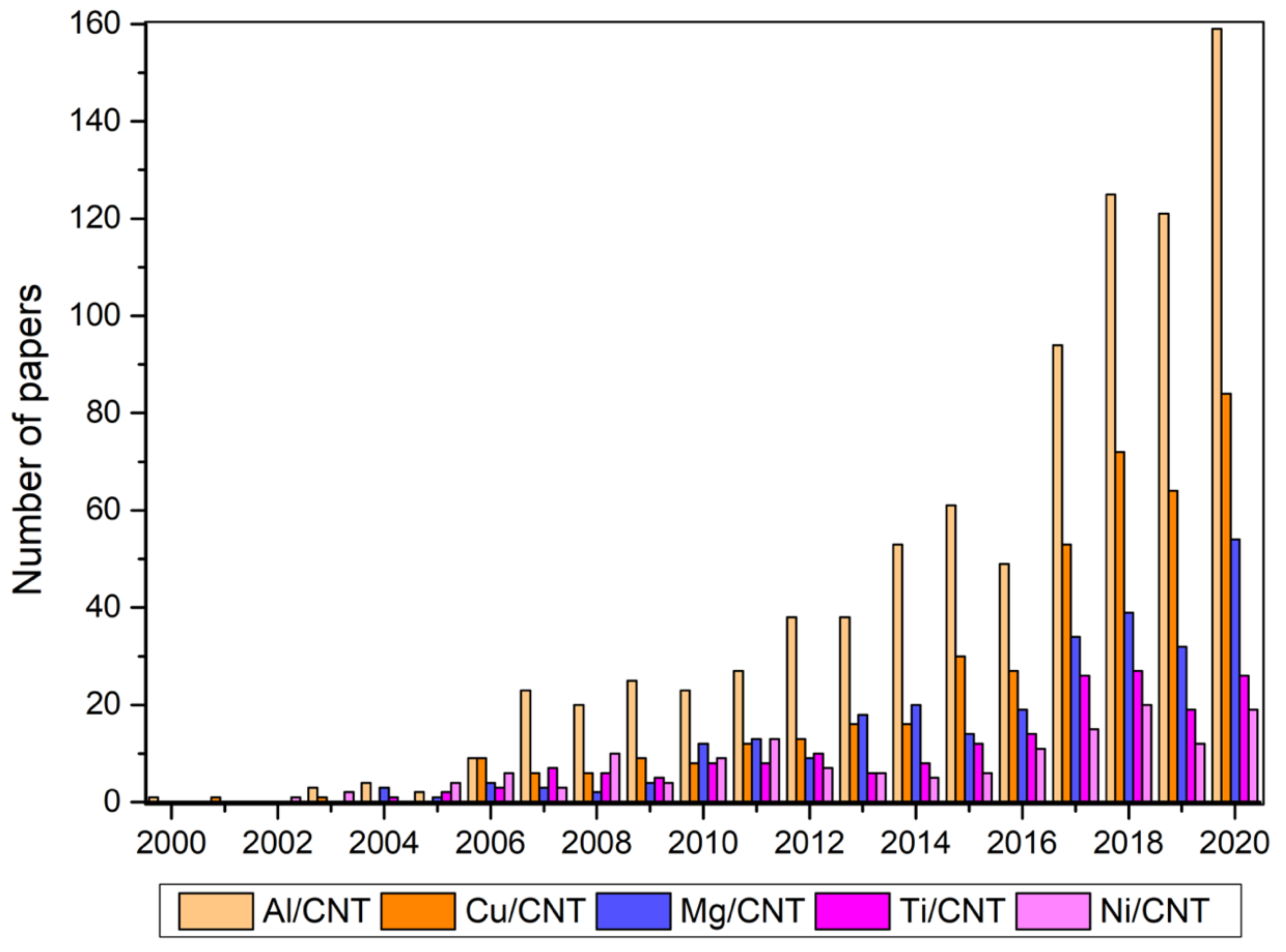

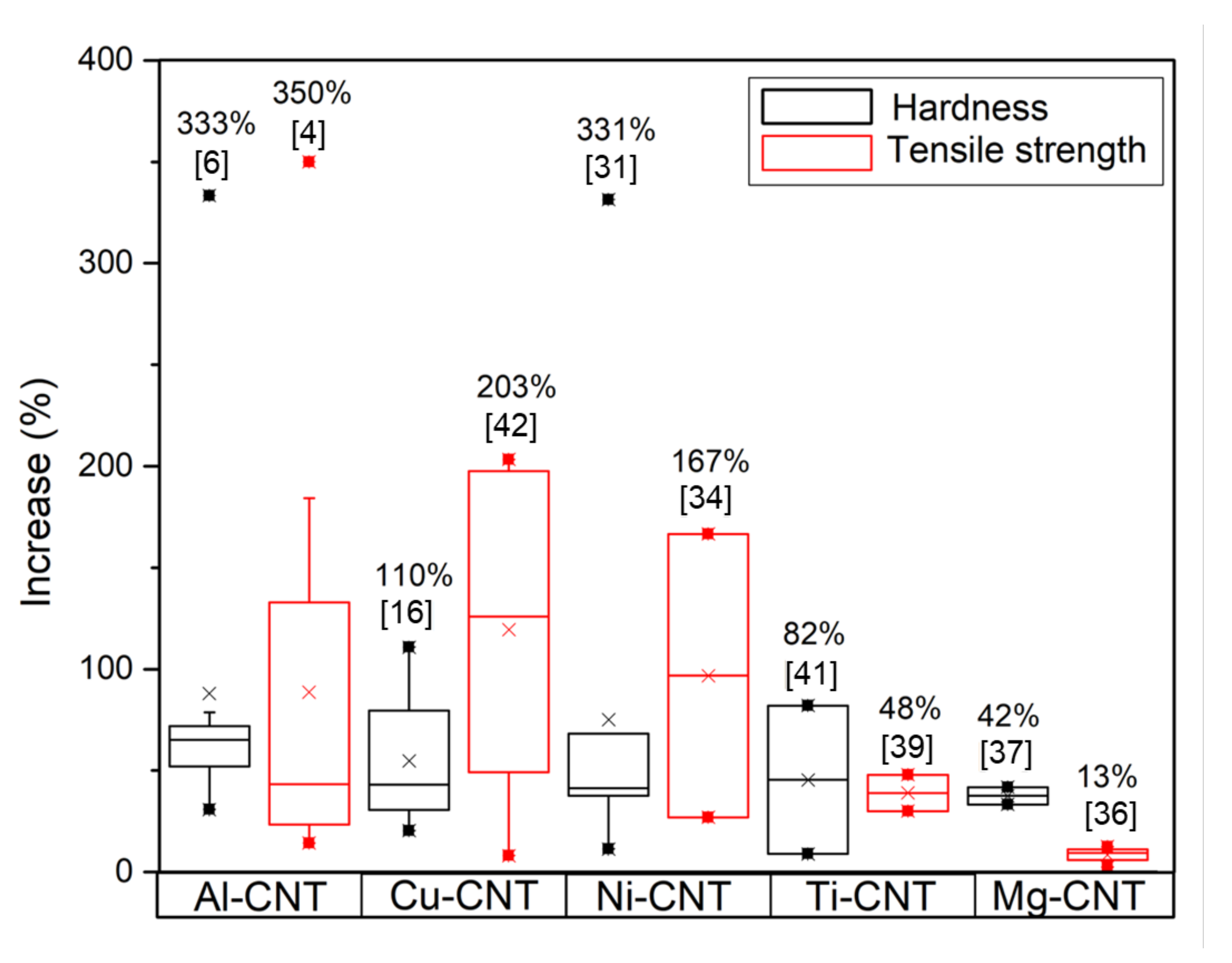
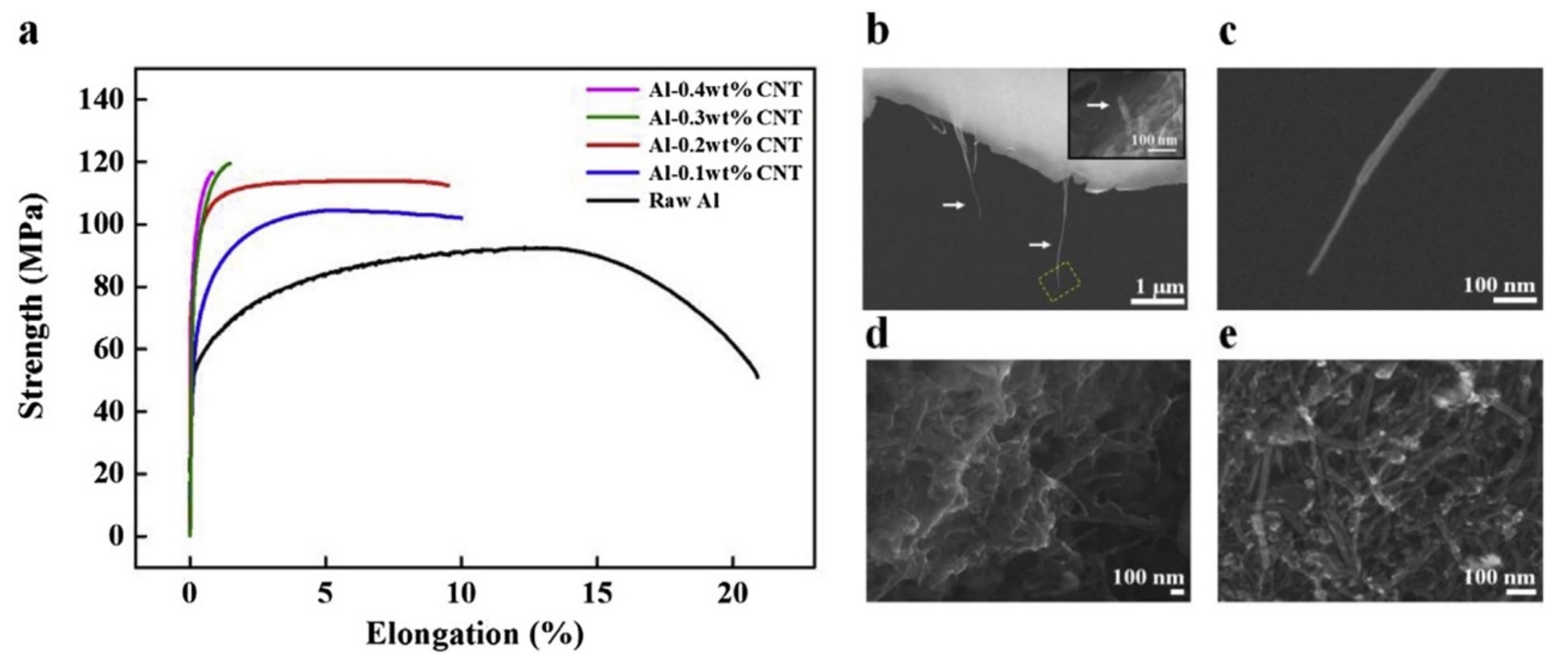
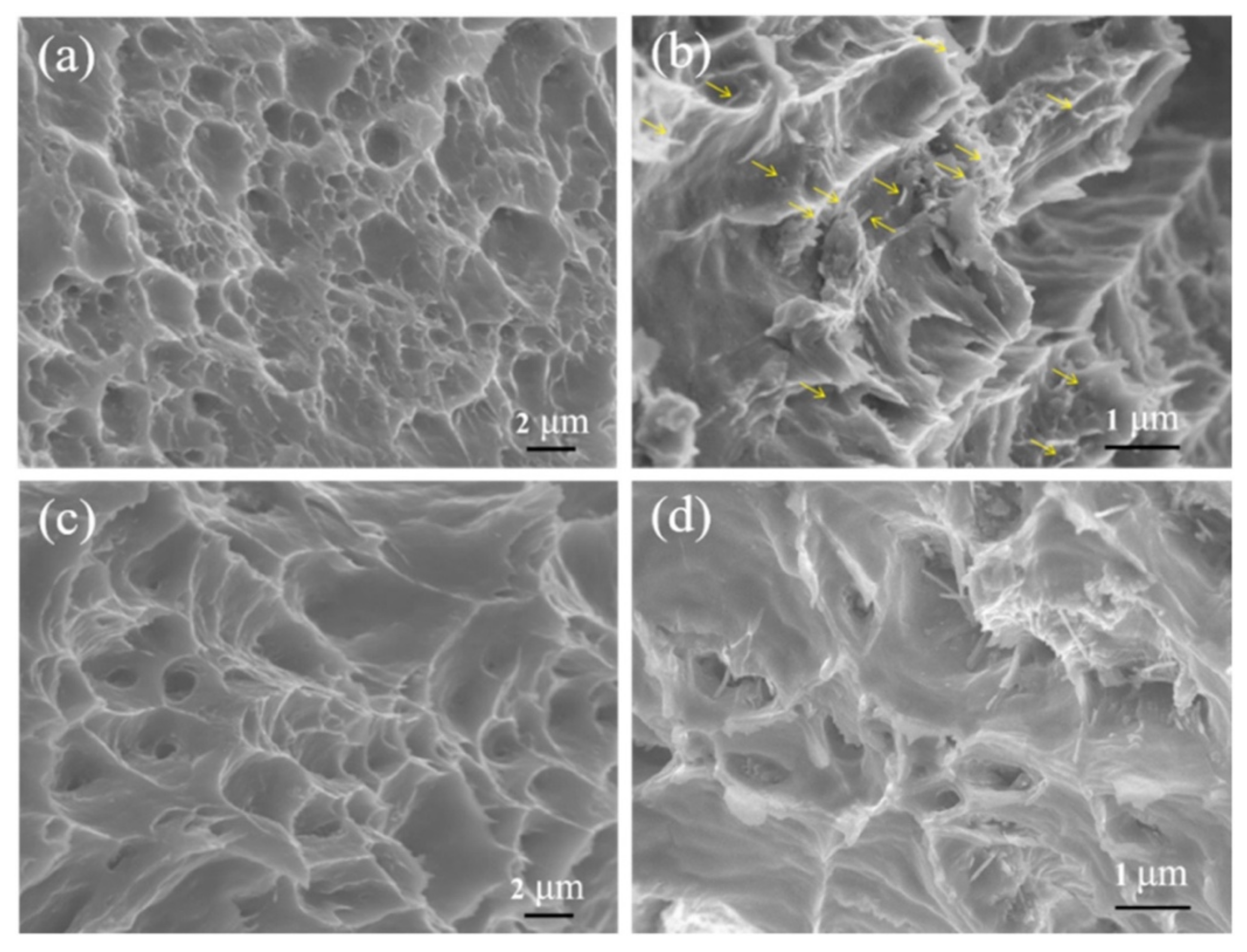
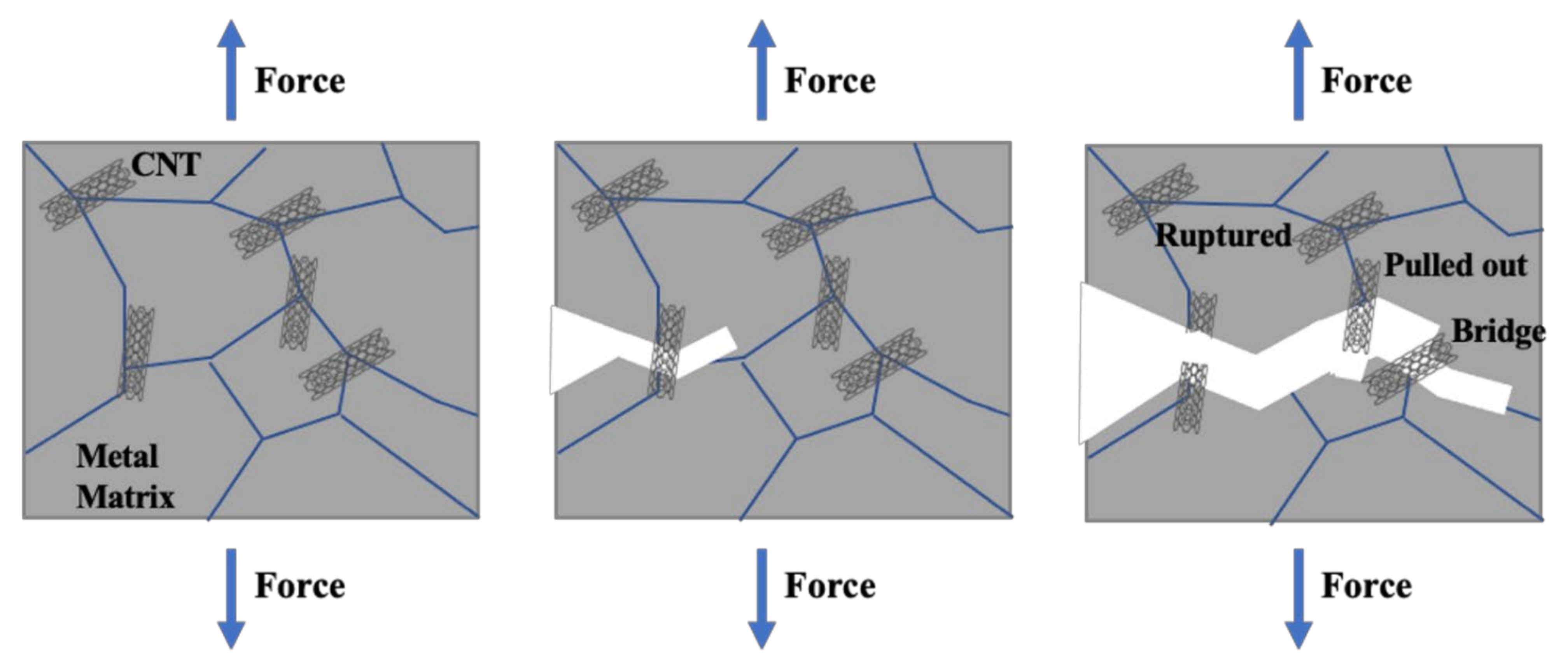
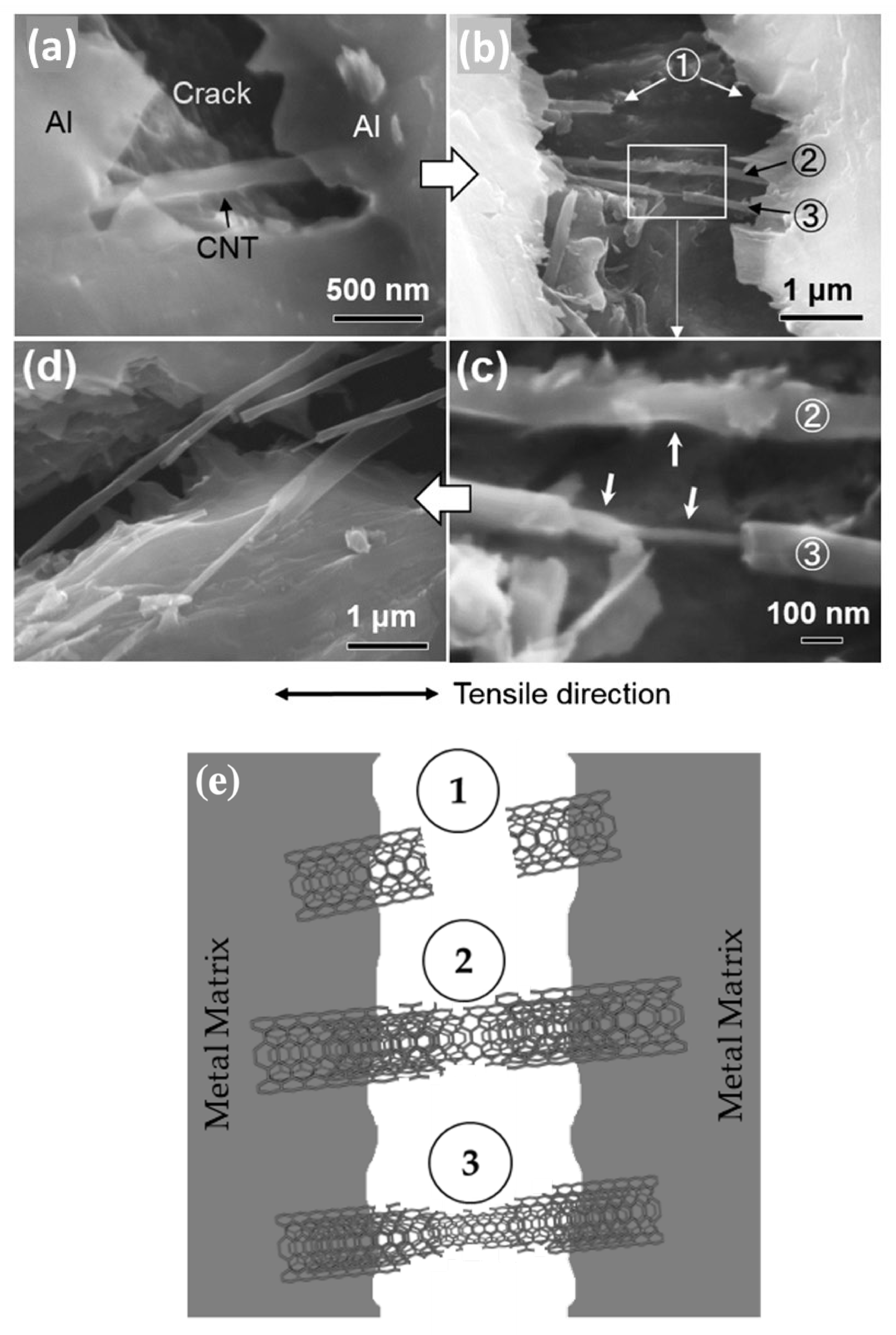
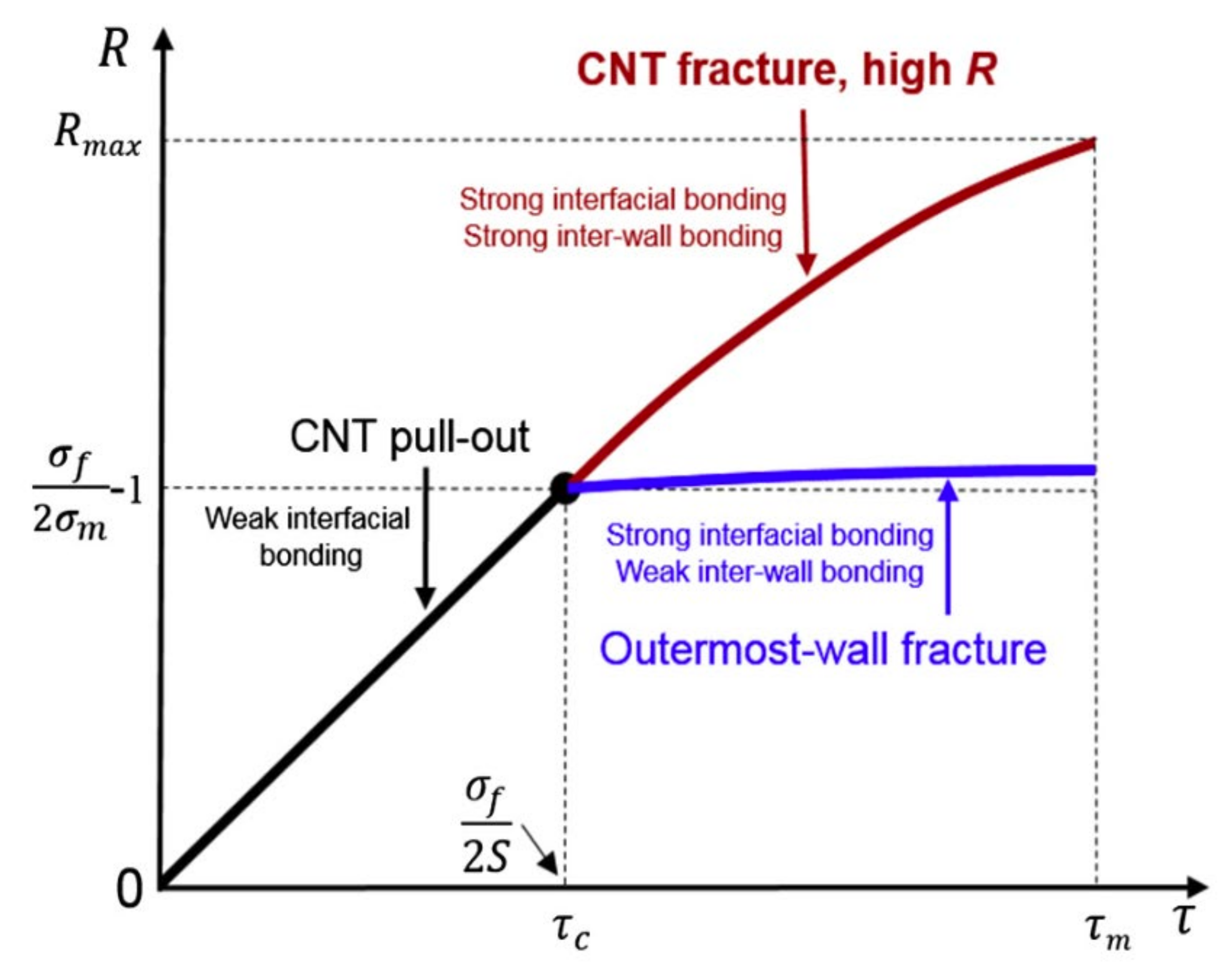


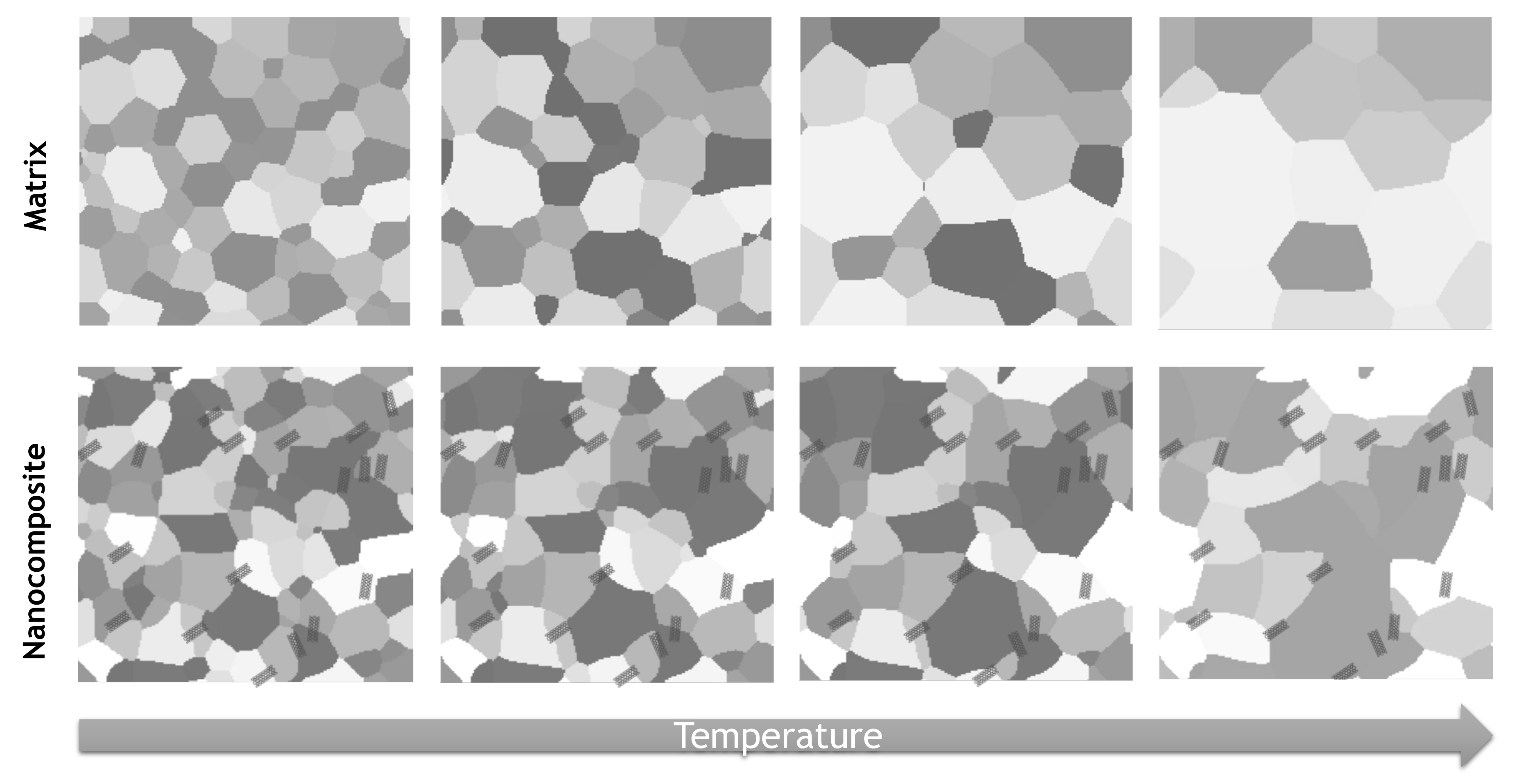
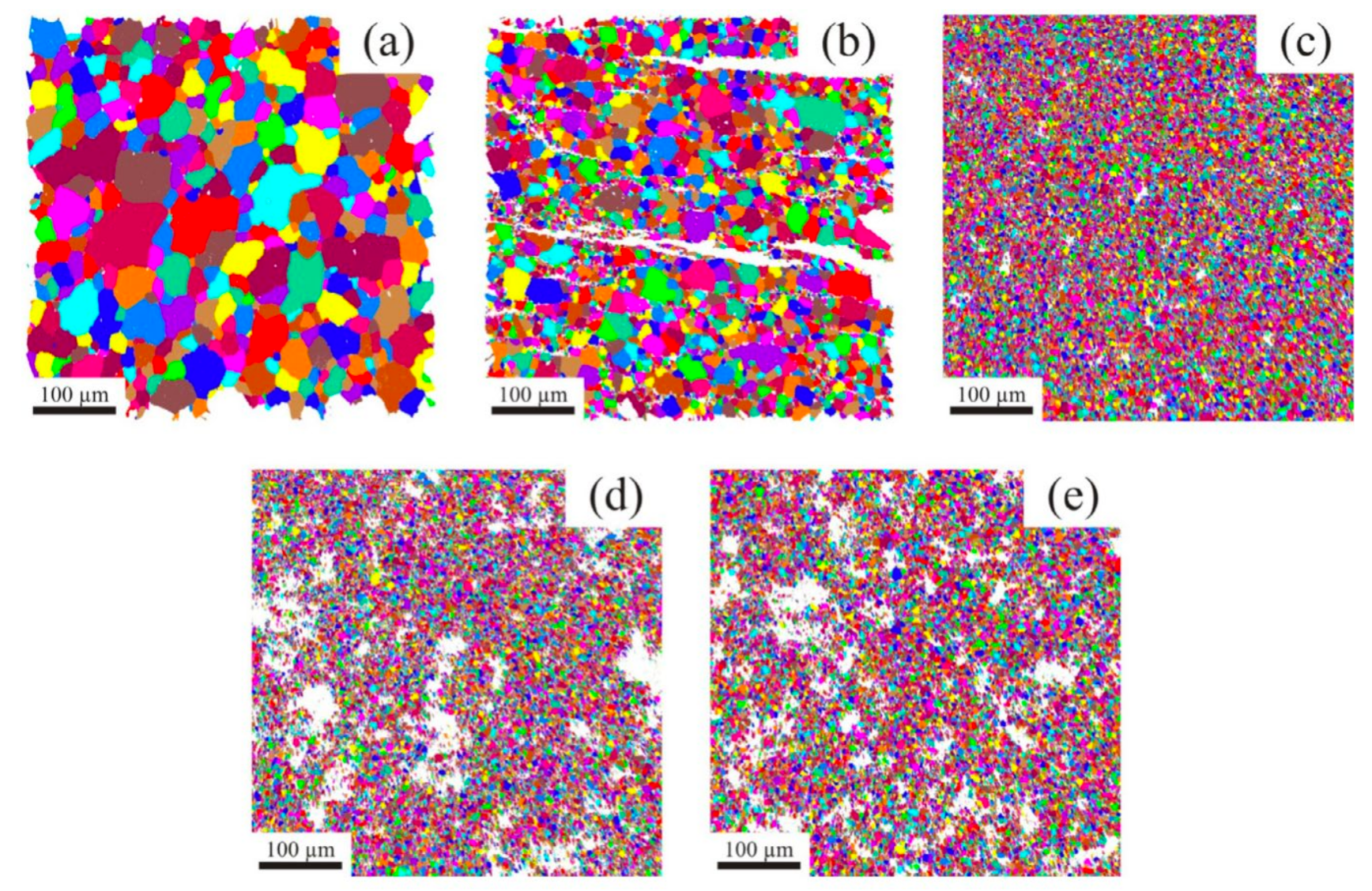
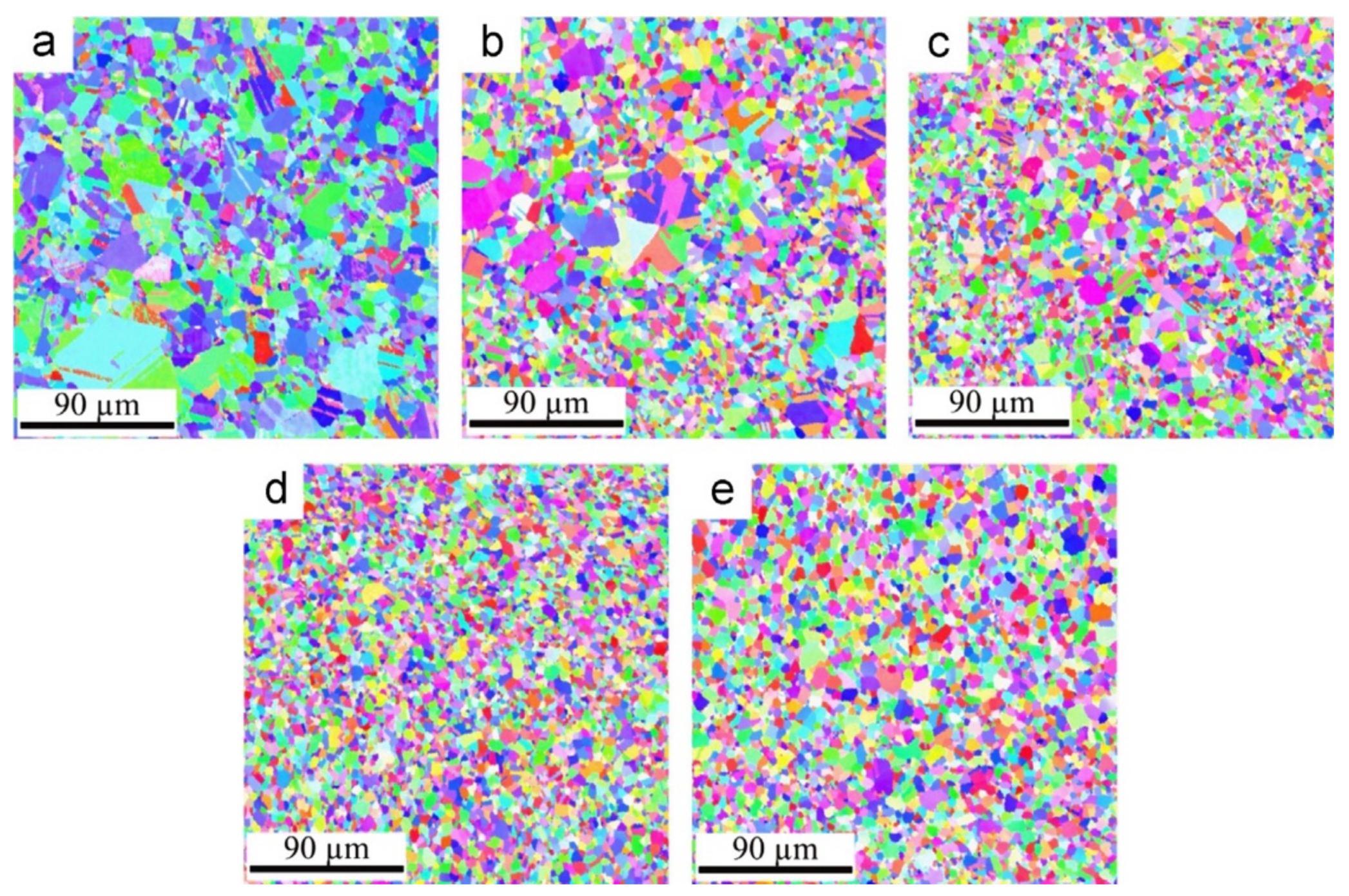
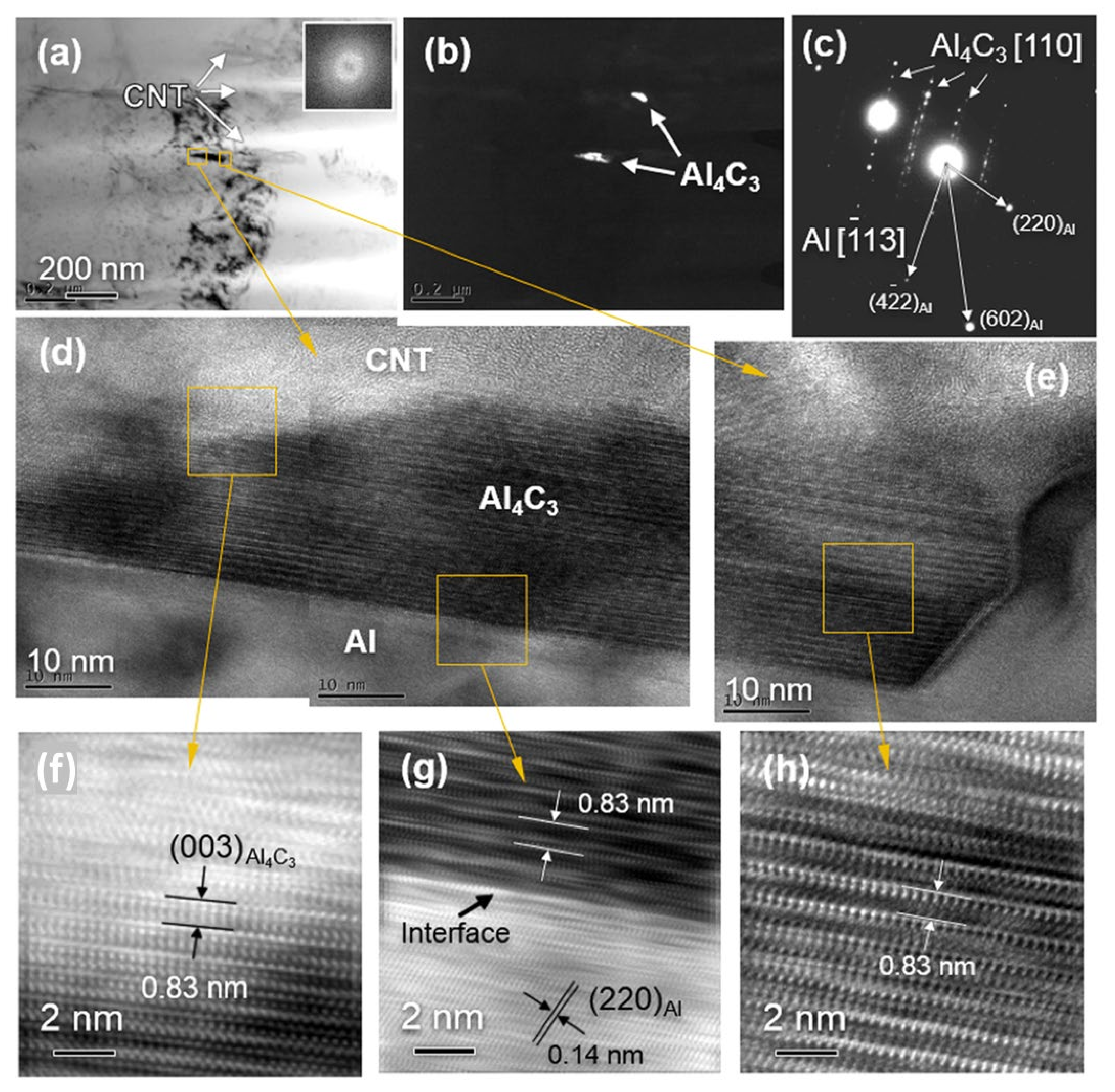
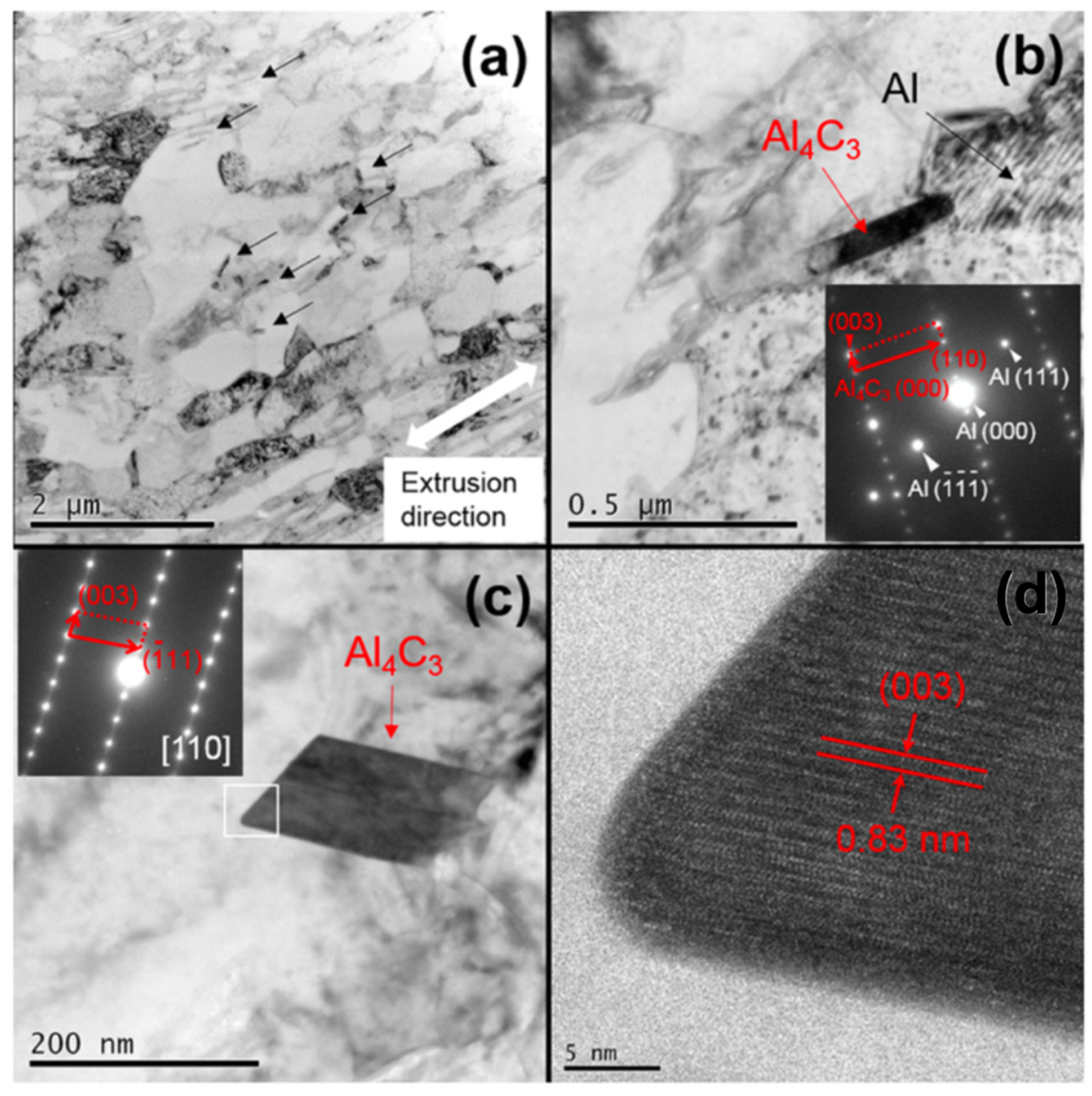
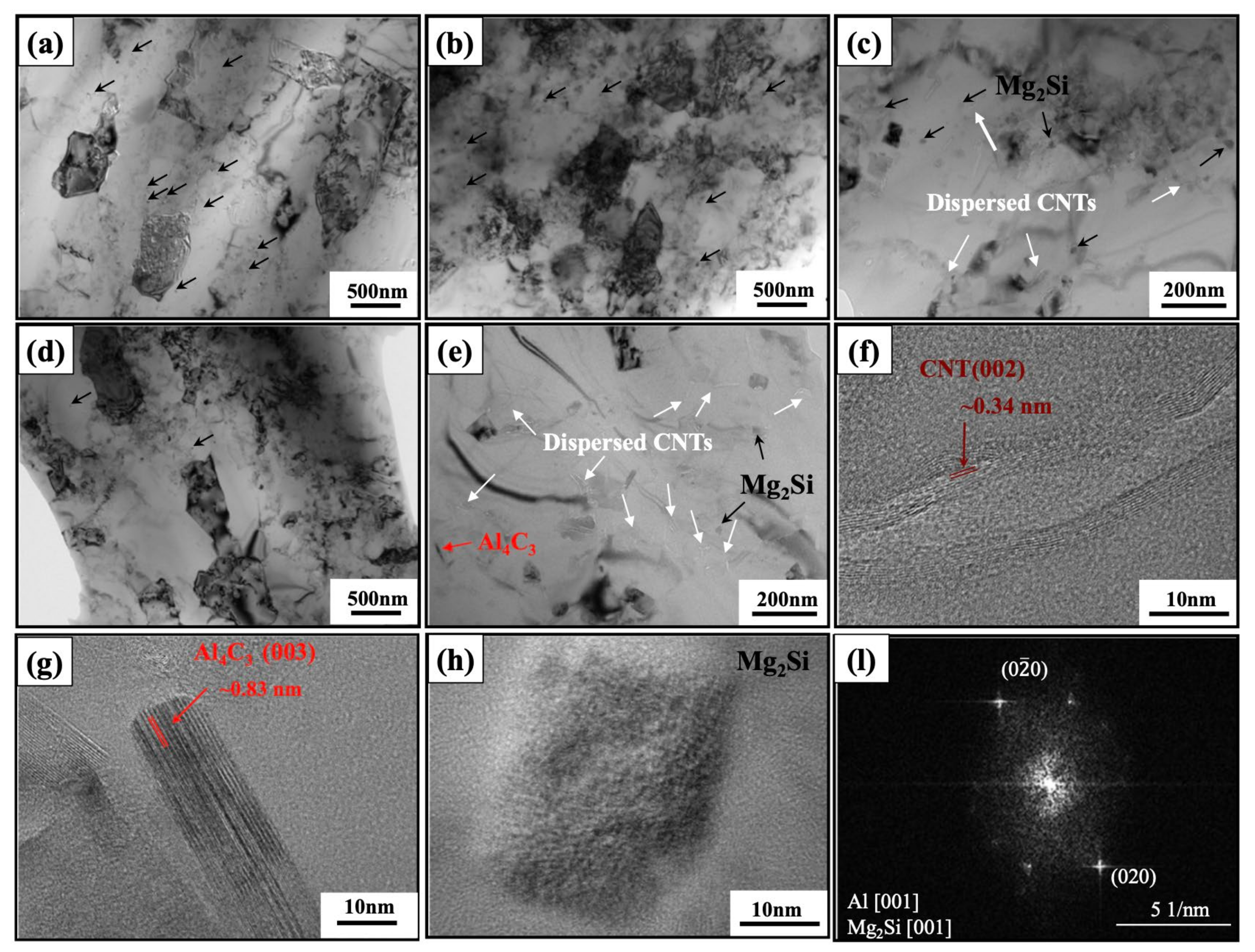
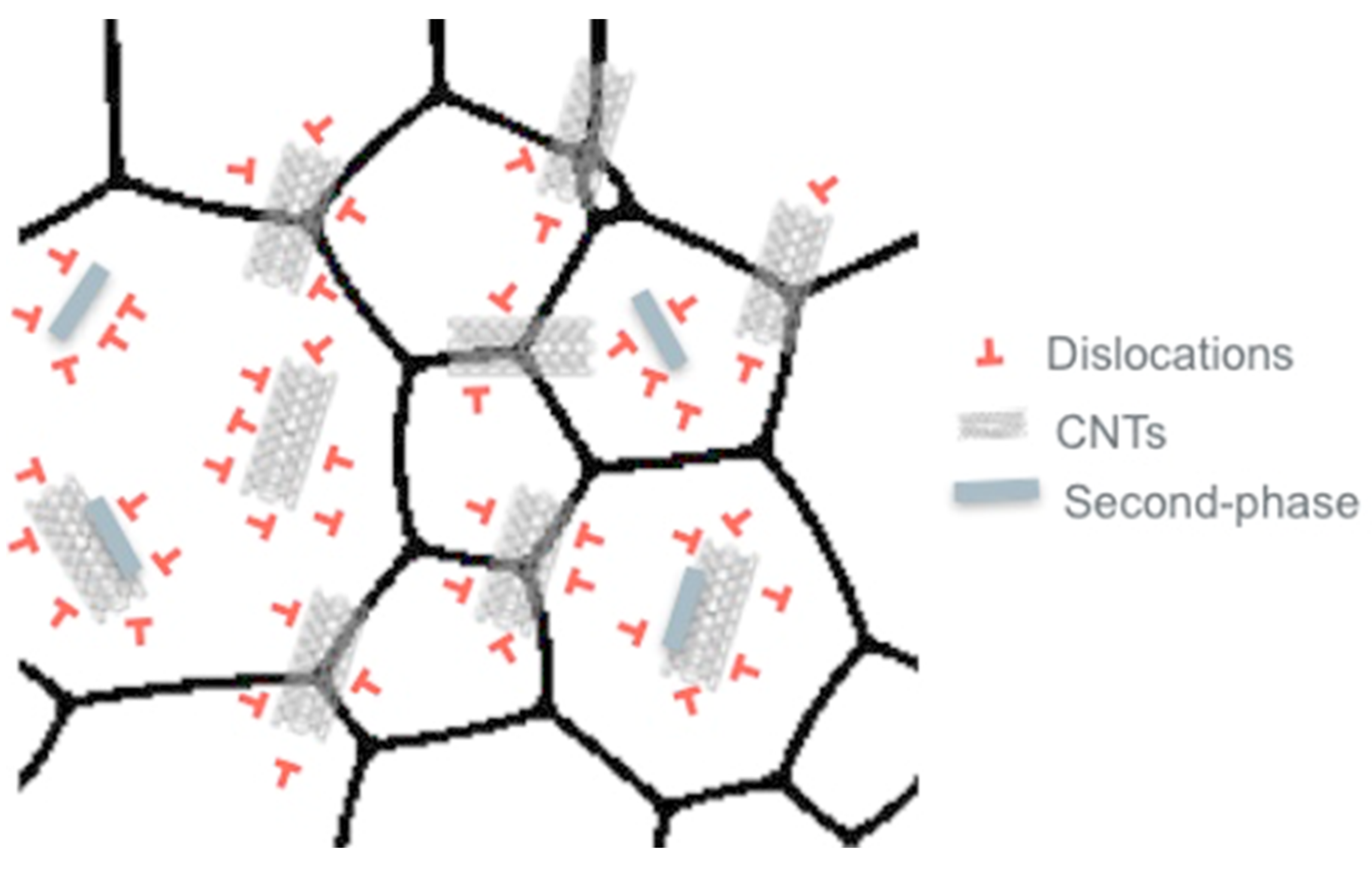
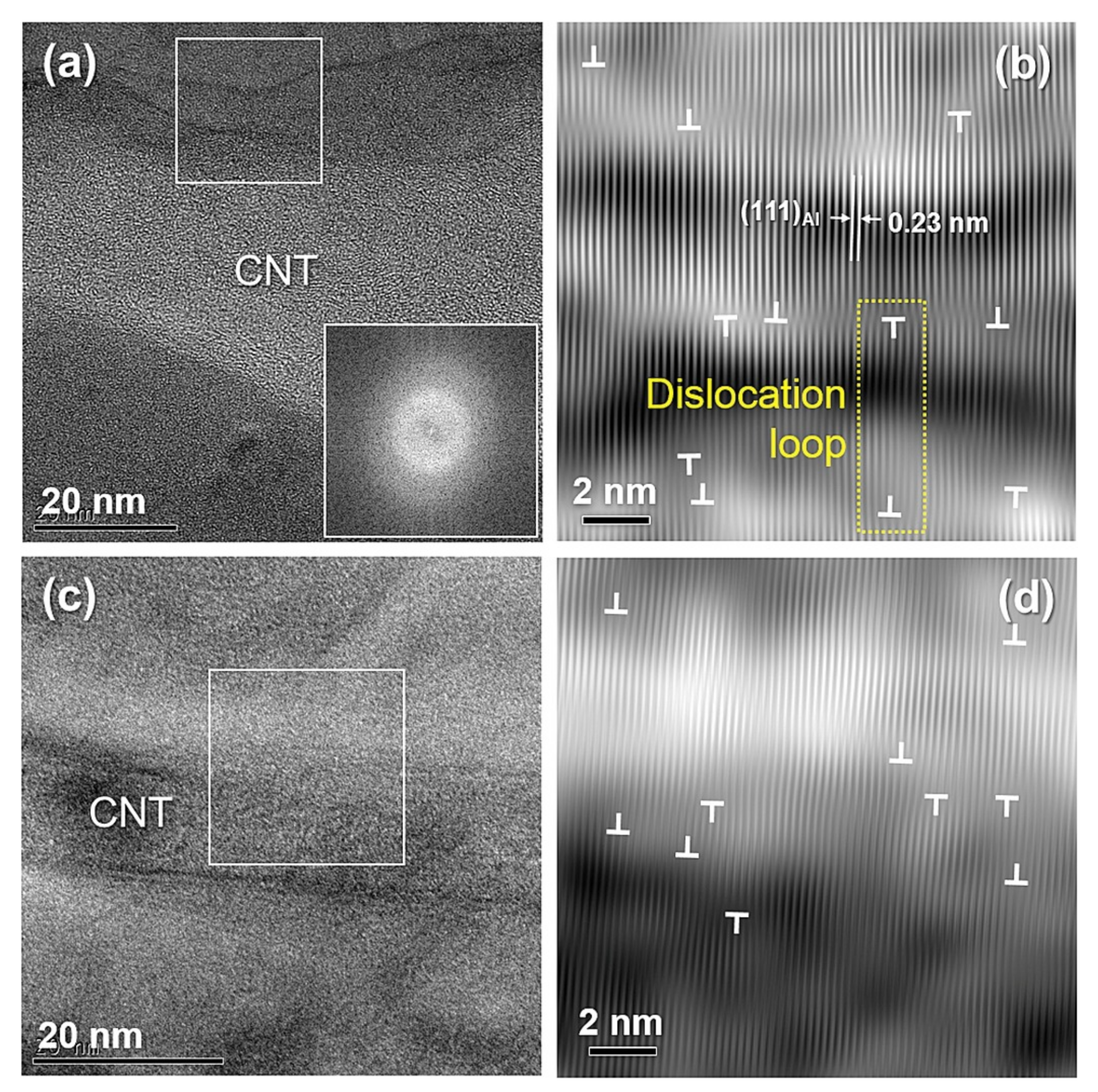

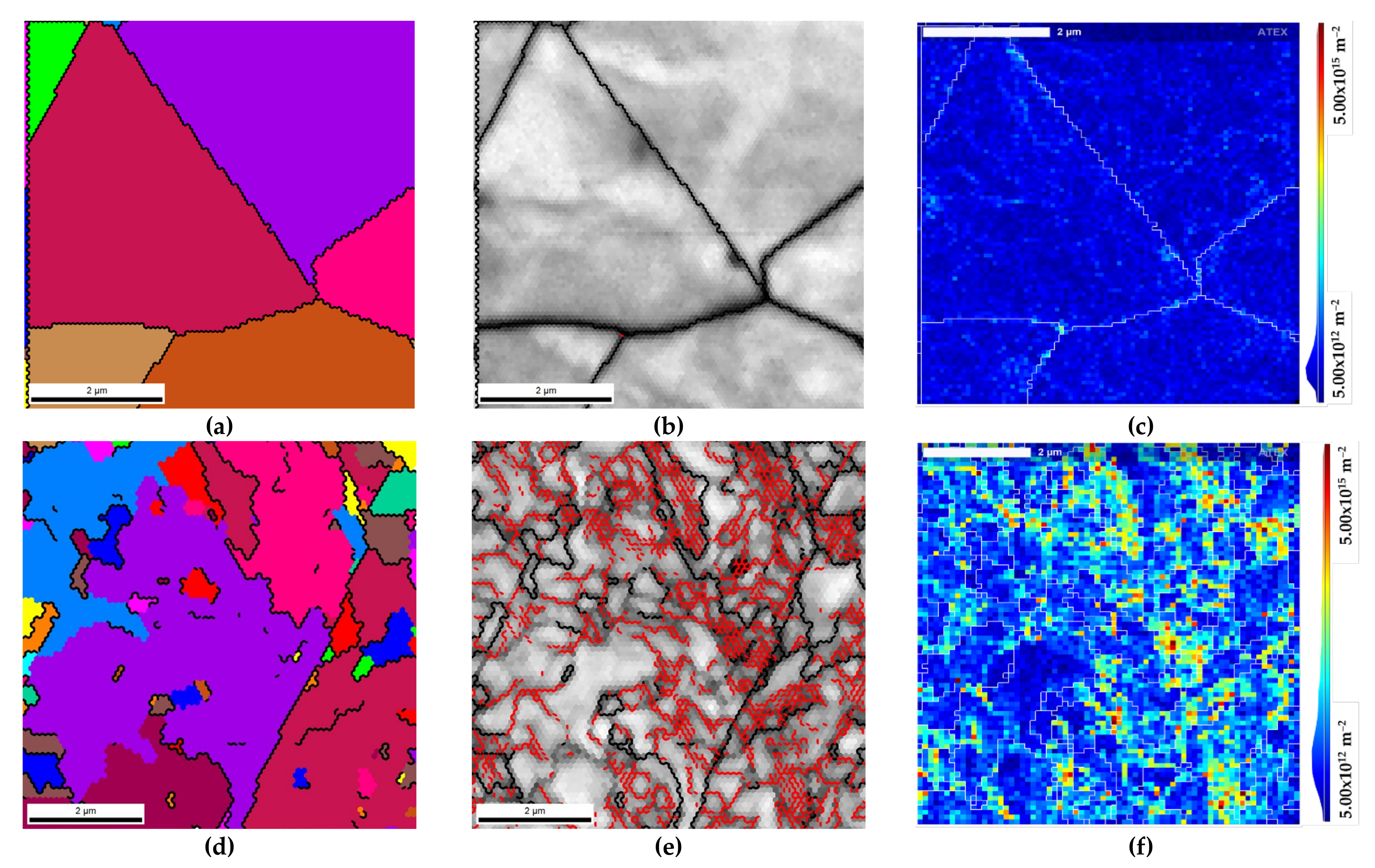

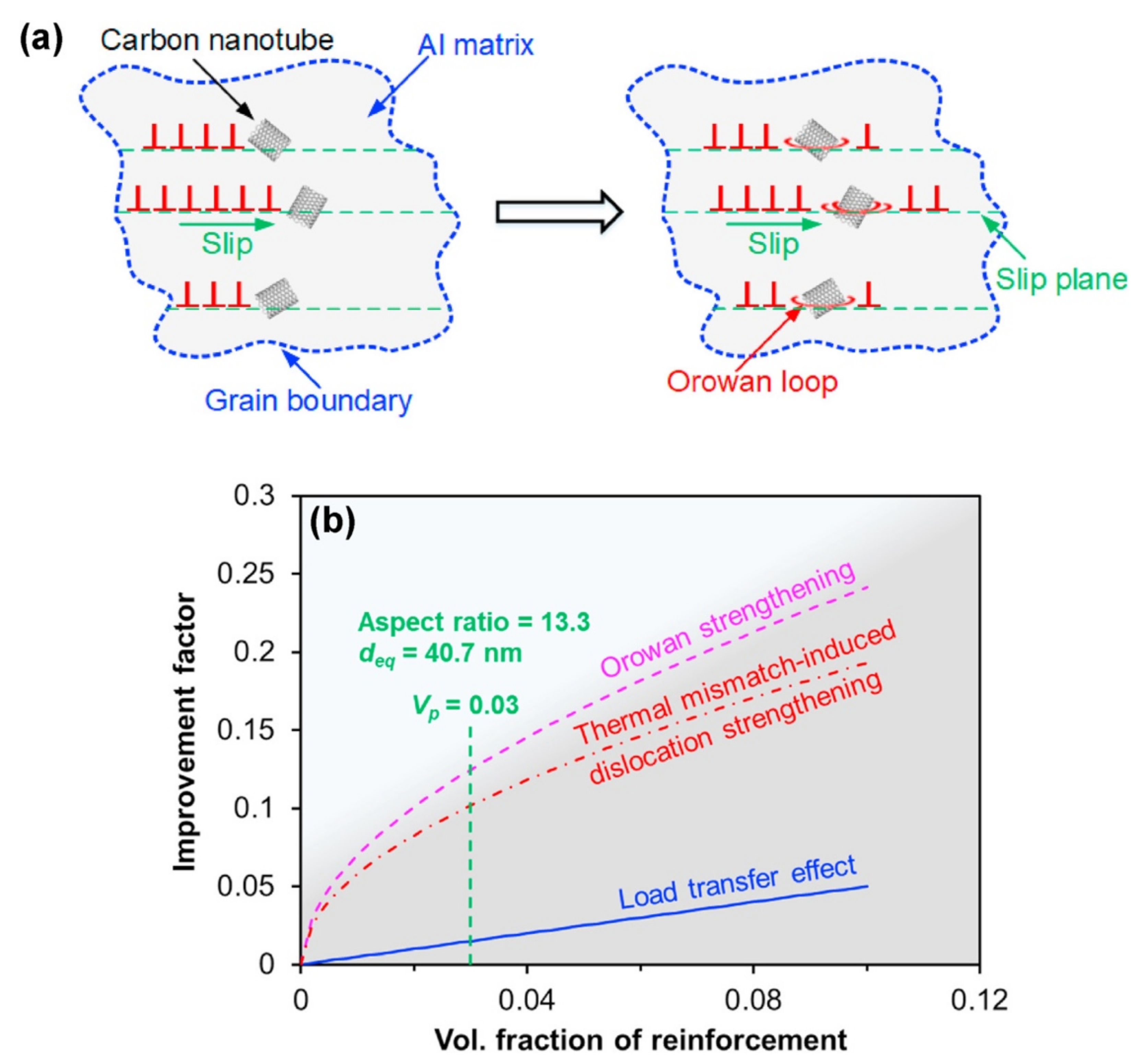
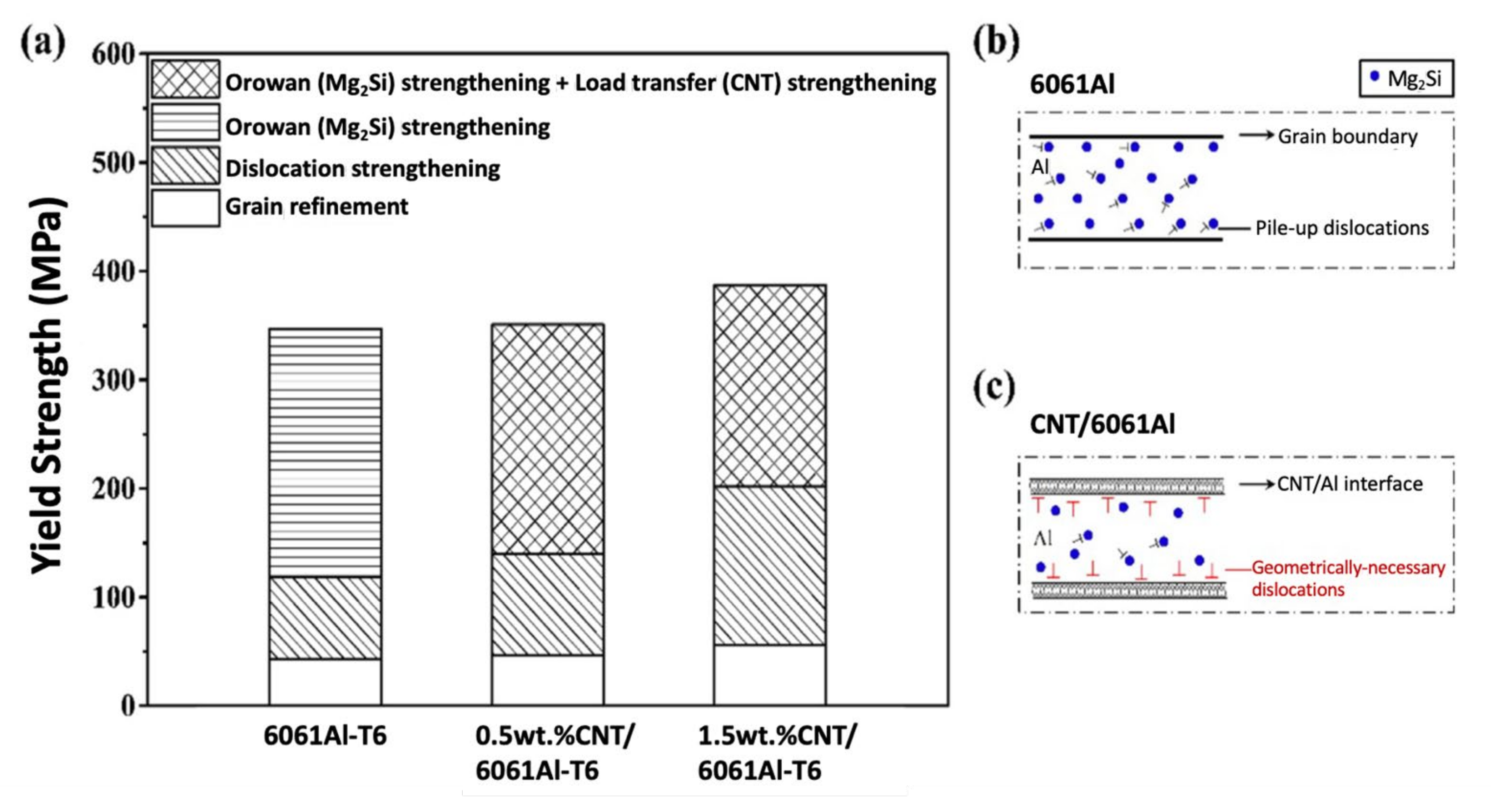
Publisher’s Note: MDPI stays neutral with regard to jurisdictional claims in published maps and institutional affiliations. |
© 2021 by the authors. Licensee MDPI, Basel, Switzerland. This article is an open access article distributed under the terms and conditions of the Creative Commons Attribution (CC BY) license (https://creativecommons.org/licenses/by/4.0/).
Share and Cite
Carneiro, Í.; Simões, S. Strengthening Mechanisms in Carbon Nanotubes Reinforced Metal Matrix Composites: A Review. Metals 2021, 11, 1613. https://doi.org/10.3390/met11101613
Carneiro Í, Simões S. Strengthening Mechanisms in Carbon Nanotubes Reinforced Metal Matrix Composites: A Review. Metals. 2021; 11(10):1613. https://doi.org/10.3390/met11101613
Chicago/Turabian StyleCarneiro, Íris, and Sónia Simões. 2021. "Strengthening Mechanisms in Carbon Nanotubes Reinforced Metal Matrix Composites: A Review" Metals 11, no. 10: 1613. https://doi.org/10.3390/met11101613
APA StyleCarneiro, Í., & Simões, S. (2021). Strengthening Mechanisms in Carbon Nanotubes Reinforced Metal Matrix Composites: A Review. Metals, 11(10), 1613. https://doi.org/10.3390/met11101613






